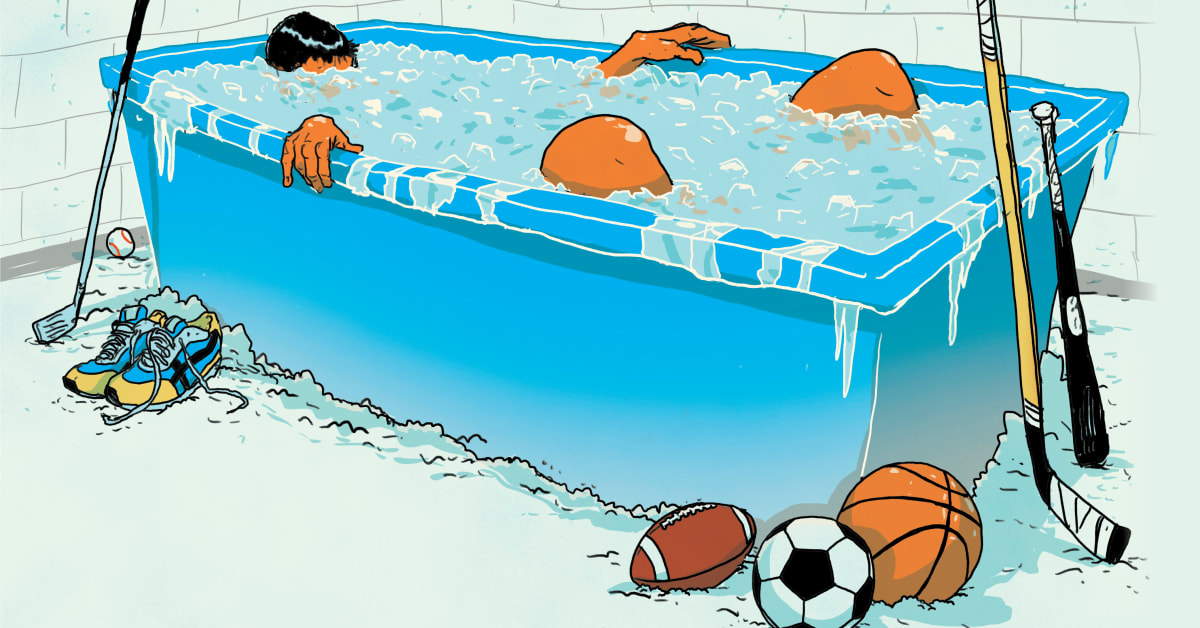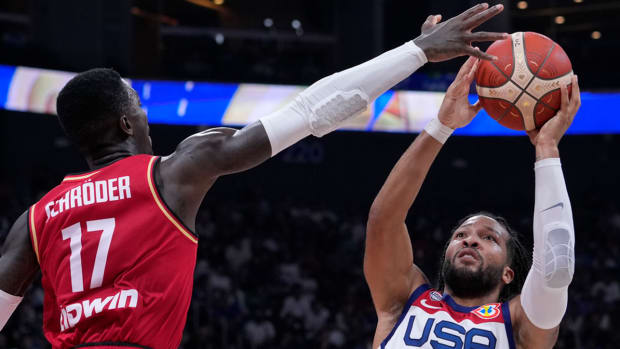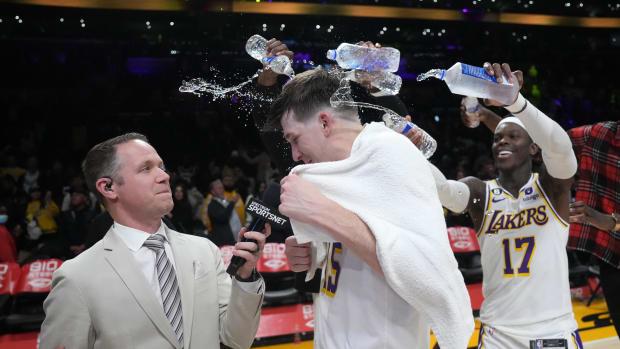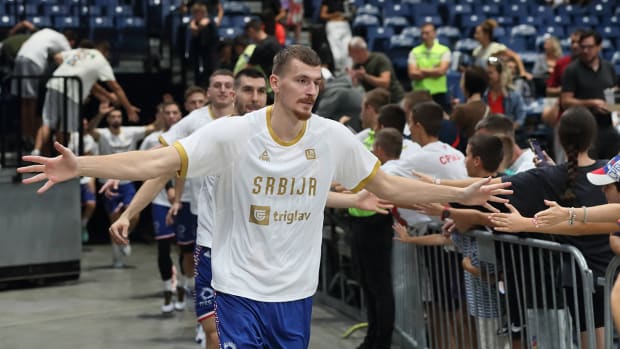Ice? Ice, Baby! Welcome to the World of Cold-Water Immersion
In the late 1980s, a research scientist in Canada named Gordon Giesbrecht placed a notice hoping to recruit volunteers for the first in a series of experiments that, no matter how he framed them, sounded deeply unpleasant.
At the time, Giesbrecht, one of the world’s foremost experts on hypothermia, needed test subjects willing to come to his lab at the University of Manitoba and sit in a tank of near-freezing water until their core temperature dropped from 98.6° to 91.4°, well into the range for mild hypothermia. At this point they’d be shivering uncontrollably—their body’s attempt to rewarm—their large joints would ache and they would lose control of their motor functions. Were they to stay in longer, their speech would begin to slur and they’d begin to feel disoriented. Eventually, “the terminal event with hypothermia is usually that your heart stops,” says Giesbrecht.
Giesbrecht, now 66 and freshly retired, was intimately familiar with the sequence. For years, he was his own primary test subject. He’d “gone hypothermic” more than 30 times in the name of research. Once, he immersed himself in frigid water for an hour and a half to drop his core temperature to 88°, the lowest ethically approved by the medical community. Another time, he had a colleague inject a gallon of near-frozen saline into his bloodstream, dropping his core temperature while keeping his skin temperature constant. “Very instructive,” Giesbrecht says. “But there was no way I was going to do that to anyone else.”
For his larger studies, though, he needed a wider range of subjects. So he put out a call for volunteers to spend three separate hourlong sessions in the university’s cold tank, each time reaching that 91° mark. (If you’re healthy, mild hypothermia has no adverse effects.) For their misery, they’d receive $64. To Giesbrecht’s surprise, he filled the slots. In particular, cyclists and endurance athletes were especially willing subjects. “You know, the masochists,” Giesbrecht says. “They want to test themselves.”
Through that study and others like it, Giesbrecht created a valuable protocol for search-and-rescue teams in winter environments. And for years, his research focus remained largely the province of the science and medical communities. Then, about a decade ago, he started receiving inquiries about a new trend, one that struck him—a man who studied ways to keep the cold from killing you—as odd.
Rather than avoiding frigid water, a growing number of people were seeking it out.
The video begins with LeBron James, shirtless, shaking his head and smiling. It then pans to his teenage sons, Bronny and Bryce, who are up to their waists in a chilled plunge pool. They are definitely not smiling. Bryce has his hands clasped together, somewhere between a prayer and a hug. LeBron giggles.
James is a staunch believer in cold-water immersion, and has been for years. He’s talked about using a cold tub at home, at the Lakers’ facility and on the road. In a pinch, his trainer, Mike Mancias, will fill a hotel bathtub with ice and LeBron will sink in for five minutes at a time, alternating three rounds with hot showers. To make it more bearable, he listens to music.
He seeks the cold for the same reason as athletes such as Naomi Osaka, Michael Phelps and J.J. Watt: They want to perform better, longer. (Watt has been known to saw holes in the surface of Wisconsin lakes to take a dip.) Given the long-standing belief in the anti-inflammatory properties of ice baths, this makes sense.
Of late, however, they’ve been joined by a host of nonathletes who’ve come to the practice for different reasons altogether. Inspired by Wim Hof, the Dutch guru with the raspy voice, they seek not to endure the NBA playoffs but to boost their metabolism, spike their dopamine or fight depression. Guy Fieri swears by three minutes in Frigidtown for his psyche. Lizzo plunges for her knees and ankles. Joe Rogan has a tub at his podcast studio. Madonna, Andrew Huberman and Lady Gaga are all devotees. Social media influencers now post plunge pics, and a host of companies sell home tub models, which run from $4,000 to $40,000. A recent Wall Street Journal story cited CEOs using plunges to close business deals. (It opens with a scene in which the tech execs pause a meeting in Tahoe to all get in a cold shower, clothed).
To the uninitiated it can all seem a bit perplexing. It’s just cold water, right? But dig deeper, as I did, and you’ll find that many people have very strong feelings about ice, its best uses and whether it helps—or maybe even hurts—us.
For starters, it helps to delineate the ice craze into two buckets, if you will: those using the cold for sports recovery and those using it for everything else (health/mood/immune system/generally feeling like you’ve been shot out of a rocket).
Let’s begin with the athletes.
If you played high school football, you might remember the sight waiting on the sideline after practice: a line of buckets—or barrels, trash cans, kiddie pools, anything big enough to hold a sweaty lineman and two bags of ice.
Grimacing and swearing, players sunk in until the coach said stop. It’s the kind of thing you didn’t easily forget: breath sucked out of you, stabbing sensation in the legs, an immediate fight-or-flight response. Players may not have liked it, but few could dispute the effect. That fire in your quad came out extinguished. Your swollen ankle felt pleasantly numb.
Though used by elite athletes in the 1960s, icing didn’t enter the sports mainstream until the late ’70s, when a doctor (and syndicated columnist) named Gabe Mirkin, writing with Marshall Hoffman, popularized the concept in the best-selling The Sports Medicine Book. At a time when many still viewed jogging as dangerous and weightlifting remained the province of bodybuilders and weirdos, Mirkin, a marathoner himself, endeavored to create a comprehensive guide. (The formidable cover subtitle: “What every athlete, coach, trainer, and fitness buff needs to know about exercise, training, nutrition, drugs, injuries, environment, sex.”)
Interspersed between sections on nutrition and how to start exercising, Mirkin set out what he called the “four-part program that you can follow” for almost all athletic injuries, whether a pulled muscle, strained ligament, injured joint or broken bone. He abbreviated it RICE (for rest, ice, compression, elevation).
The acronym became shorthand for injury recovery, entering the lexicon of high school and college trainers everywhere. Pitchers adorned their elbows with frozen bouquets, point guards their ankles. Like eating your vegetables, the experience was to be endured because, you were told, it was good for you.
And so it went for the next few decades, even as a host of new, often-futuristic recovery methods entered the market. The ’80s saw a boom in Jacuzzis and the era of Gatorade and electrolytes. Sports massage and foam-rolling gained popularity. By the 2000s, athletes like Terrell Owens swore by hyperbaric chambers, while cutting-edge training centers started adding giant nitrogen tanks so they could operate cryotherapy chambers, which use supercooled air—usually below -200° for three minutes or so—to drop body temperature.
Even so, ice retained its prominence among most athletes, including ice bath aficionados like Phelps, Paula Radcliffe, Kelly Slater and Ronaldinho. Nothing about the process was high-tech, but it was safe, easy and cheap. All you needed was a bag of frozen water and a bathtub or a bucket.
Only, just as more people began immersing in the cold, Mirkin and others began to question whether they should.
If you want to reduce pain, swelling and inflammation, ice does a bang-up job. When the body gets too cold, blood rushes to protect vital organs, leaving extremities numbed, while blood vessels narrow—a process called vasoconstriction—slowing the relay of that “pain” feeling by our nerves. (Many pain medications, including those for migraines, also work through vasoconstriction.)
But what if inflammation is a good thing? What if all we’re doing by icing an injury or a sore muscle is delaying the repair and recovery work that is inflammation’s purpose?
This was the argument put forth by a handful of researchers and naysayers in the early 2010s, none more impassioned than Gary Reinl, a Nevada-based personal trainer who began something of an anti-icing campaign, writing a self-published manifesto about “The Illusionary Treatment Option.” The theory was buoyed by studies in ’11 and ’13 that questioned the efficacy of icing. Soon enough, physical therapist Kelly Starrett, of “Supple Leopard” renown, was on board. Eventually, even the father of RICE, swayed in part by Reinl, came around. By ’15, Mirkin had written a column titled, why ice delays recovery.
Broader media coverage ensued. ice for sore muscles? think again, read a New York Times headline. It made athletes wonder: All this time, had they been doing it wrong? Had they been enduring the cold for nothing?
But by this point, recovery was no longer the only—or even the main—reason people were submerging.

One of many Warriors with a cold routine, Thompson’s involves a morning dip near his house.
Illustration by Michael Byers
Klay Thompson was skeptical at first. This was back in 2018, when Warriors coach Steve Kerr had arranged for the motivational speaker Tony Robbins to visit practice. Robbins spoke about many things that day, but what stuck for Thompson was Robbins’s habit of keeping his pool just above freezing and jumping in every morning. Robbins swore it was the best way to start the day.
Thompson was not much of a cold guy, but he did have an outdoor pool at his Oakland home and he did have a hard time waking up. So one winter morning he headed out and leaped in. It was, Thompson says, “very hard, very cold.”
Upon getting out, however, the chill had given way to mild euphoria, the result of what one researcher termed a flood of “the happy hormones”—endorphins, serotonin, dopamine and oxytocin—activated by the body’s cold response. So the next day, and the day after that, Thompson did it again. “You get out and you just feel like you can accomplish anything,” he said recently, sitting in a hallway in Chase Center after practice. “Everything throughout the day seems a lot easier.”
He wasn’t alone. Just as Robbins had discovered plunging, so had many others, turned on to it by Huberman’s podcast, a proselytizing friend or the teachings of Hof, who set a slew of records for enduring cold temperatures—from sitting in a giant box of ice cubes to swimming under ice to running a barefoot half marathon in snow—and preached a combination of breathing exercises, cold exposure and willpower as the path to wellness. This, in turn, led to the influencers and other believers. Soon enough, Kevin Hart was hosting a YouTube show called Cold As Balls, where he interviews athletes and famous people while they both sit in ice tubs. Meanwhile, Kristen Bell was extolling the benefits of her “brutal” routine, and Dwayne Johnson was sharing his showering protocol with the world (a cold one in the a.m. provides, he wrote, a great “morning bite to wake me up, clear cobwebs and get rollin’ with my day”).
None of this is new, of course. The core practice itself dates back millennia. Ancient Greeks used cold water for therapeutic reasons, and countries like Sweden, Russia and Finland have a long tradition of ice swimming; in Finland, where it’s known as avanto, 720,000 people swim regularly in the winter. Here in the United States, Coney Island Polar Bear Club members have been sprinting into the wintry Long Island ocean for more than a century. For most of that time, they were considered maniacs. Today, if inadvertently, they are on the cutting edge.
Meanwhile, the sports world has evolved in its approach to using cold for recovery. The Warriors, for example, no longer mandate icing but did install plunges at their facility after a number of the players, including Steph Curry, became fans. Most of the team will cycle through as the season wears on, according to Rick Celebrini, Golden State’s VP of player health and performance. In addition to Curry (who has a plunge at home) and Thompson, Draymond Green swears by it. The players, many of whom have spent their lives around ice baths, find the current plunge trend amusing. “The new way is the old way,” says Curry.
Protocols vary by team, trainer and athlete. For recovery and performance, the current trend in the NBA is to spend three minutes or so at 39° to 42°, alternating with 15-minute sessions in an infrared sauna. Rex Butler, a physical therapist and former USC water polo player who now works with pro athletes, including Thompson during his ACL rehab and Jets defensive tackle Solomon Thomas, uses something similar (he prefers only 45 seconds of cold). After three rounds, says Butler, “If the athlete has swelling or joint effusion where there’s fluid in the joint, it really knocks it out.”
Celebrini sticks with the tried-and-true method of 10 to 15 minutes at 50° to 60°. His goal is to present players with a “smorgasbord” of recovery options, and he views cold immersion as a valuable tool, ranking it after sleep (“the clear number one”), nutrition and hydration in the hierarchy of techniques (followed by active recovery, massage, foam-rolling and compression boots). Provided, that is, the players buy in. A couple of Warriors, notably Kevon Looney and Andrew Wiggins, aren’t big fans of the cold tub. (They’re not alone; in a video, Karl-Anthony Towns of the Timberwolves can be seen yelling, “Oh, s---! Mama, no!” upon lowering himself into an ice tub.) Says Celebrini: “If you’re thinking, I don’t want to do this, I hate this, that’s not a positive recovery tool.”
Indeed, intentionality appears to be key to the practice. If you fall into a frozen Canadian lake it’s unlikely to be a positive experience in any regard and can indeed be fatal due to your body’s immediate hyperventilation response (most deaths occur when people swallow water and drown). That fight-or-flight reaction—the one Giesbrecht has studied—is the definition of negative stress.
But if you seek out the cold, you’re triggering a positive-stress situation. And from a neurological perspective, you’re boosting norepinephrine, a neurotransmitter and hormone, while causing dopamine to surge by up to 250% and your metabolism to spike by 350%, according to one study. (When a team of researchers deployed functional MRIs to monitor test subjects’ neural networks during cold immersion, they found increased connectivity in areas of the brain associated with attention control, emotion and self-regulation, leading participants to feel “more active, alert, attentive, proud, and inspired and less distressed and nervous.”)
This leads us to the psychological element, the one Giesbrecht noticed with his long-distance cyclists and that spurs Robbins, Thompson and countless celebrity adherents. Just as running an ultramarathon is, in many ways, an unnatural act, so is sitting in freezing water for an extended amount of time. For some people, this challenge is particularly alluring. (Celebrini calls it “the mental grit component.”) A niche group of athletes even compete in ice swimming, completing various feats and training for international events. The coach of the U.S. team, Joe Zemaitis, is an amiable 43-year-old open-water swimmer and former triathlete, the kind of guy who once swam 47 hours straight for fun. In 2018, intrigued, Zemaitis took up ice swimming. As for why, he says, “I think I’ve always just been drawn to that idea of, How do we make this harder? If you’re swimming open water, how do we make it colder? How do we make it farther? How do we just raise the bar on that challenge?”
He concedes that most people don’t see the world this way. When he tried to recruit the teenagers from his Arizona club, Swim Neptune, to ice swimming, “a lot of people are like, Oh, hell no. They dismiss it out of hand.” In the end, he was able to convince two of his star pupils, siblings Keaton and Ezmee Jones, to compete at the 2023 world championships, in Samoëns, France. Says their mother, Elizabeth: “We would tell people, and they would be like, ‘I’m so confused. Why would you do that? That sounds terrible.’” The Jones kids, who both medaled, returned pumped. Even so, Keaton, 19, now a swimmer at Cal, wasn’t sure how often he wanted to do it again. Ezmee, 16, says it was “a lifetime experience” and is all in.
Now, it goes without saying that a pursuit like competitive ice swimming requires training and acclimatization (not to mention a mandatory medical checkup and EKG to rule out heart problems, as cold-water shock causes blood pressure and heart rate to skyrocket; for those with a history of heart disease or irregular heartbeats this can be dangerous and even life-threatening). It is not for everyone.
The allure of the cold plunge, however, is that it provides a burst of the same benefits as swimming in an alpine lake simply by sitting there for two minutes.
Or at least that’s the idea.

LeBron is a longtime believer in the power of the plunge. His sons—not so much.
Illustration by Michael Byers
On a recent afternoon I headed to Reboot, a spa in Oakland where Warriors players got hooked, to try out the NBA protocol. I brought along my two teenage daughters, both of whom play high school sports, for a range of perspectives.
Located on a bustling, leafy street in Oakland, Reboot feels like a doctor’s office if it got an Esalen makeover. A small fountain ripples. Hot tea is available. I’d reserved the “Fire & Ice” package: 45 minutes in a room with an infrared sauna and a cold plunge tub. A smiling attendant with a man bun showed us the ropes and recommended we change; shower; then spend 15 minutes in the sauna, a phone-booth like contraption set to 140°, followed by a few minutes in the plunge (ours was set to 48°).
I’d timed the visit to coincide with recovery from an over-35 rec league hoops game the night before—the middle-aged weekend warrior equivalent of an NBA back-to-back. I’d woken up stiff and sore. My hip ached, and the plantar fascia on my left foot felt like someone was holding it over a Bunsen burner.
In the room, ambient music played, and the light cycled from a pale blue to a pale red, dappling the plunge pool. I half-expected incense. After warming in the sauna, my older daughter headed to the plunge. Moments later, she scampered back. Daughter No. 2 lasted longer, about a minute, deep breathing and clenching the sides of the tub. I followed and—wham!—I felt it, what Butler calls “that huge dump of dopamine and adrenaline.” I also felt really, really cold.
We kept at it, though, cycling through three times from sauna to plunge.
An hour later, on the drive home, we rendered verdicts. Both girls liked the experience, though the novelty probably played a role. They felt refreshed, “cleansed,” as my older daughter, Callie, puts it. Eliza, the younger one, found the mental element fascinating. “Your instinct is to get out because your body is telling you, You’re going to die like this. But in your brain you know that’s not real.”
As for me, the pain in my hip and foot were now a distant memory. So was any stress I’d carried with me to Reboot. As bracing as the first entry was, by the end of the session I’d reached a bit of a Zen state—as if observing myself from above. A residual chill and calmness trailed into the afternoon, as did an urge to take a nap. As for my physical recovery, I can’t say for sure, but it certainly felt like it helped.
And that, it turns out, may be the most important thing.
So does cold immersion work? The current consensus is essentially yes and no, depending on how and why you’re using it. For a pro athlete with a torn muscle facing a six-week recovery, the sooner you let your body undertake its natural repair work by letting inflammation do its thing, the better. In that case, less topical ice is better.
But if you turn an ankle in the first half and want to come back in the second half, ice away. “It’s the safest treatment for pain that we have, safer than Tylenol and NSAIDs,” says Mirkin, who has softened his anti-icing stance in the last 10 years. Same goes for ice baths after a big game, when you’re sore or in pain. “A noncompetitive athlete, who cares if you slow healing by a day? You can continue to ice,” he says. Besides, as Celebrini points out, those positive inflammatory effects, while great for long-term healing, can come with a short-term cost. “We know all the negative repercussions of pain,” he says. “If [by foregoing cold exposure] you get muscle inhibition and disturbed sleep, then that’s going to trump any sort of inflammatory effects that are positive.”
Timing matters, too. With the Warriors, Celebrini recommends eschewing cold therapy in the preseason to maximize the adaptation to the stresses and demands of ramping up after summer. Then, come January or February, when the goal is to keep high-minute, older players like Curry and Thompson going through a long season, the cold tubs help them decrease swelling and manage pain.
As long as the players are opting in, Celebrini is on board. As he says, “The perception of recovery is equally and sometimes even more powerfully relevant” than the physiological process. Indeed, study after study shows that just believing something helps can have a measurable effect on whether it actually does. We know this as the placebo effect, but calling it that, as Christie Aschwanden points out in her excellent book on recovery, Good to Go, is a misnomer. Really, she notes, it should be “belief effects” or “anticipatory response.”
All of this relates to athletic pursuits, though. If you’re cold-tubbing or taking a cold morning shower to boost your mood, there appear to be no physical downsides as long as you don’t have heart problems and aren’t re-creating Giesbrecht’s experiments at home. (Please don’t!) The same stresses that lead to hypothermia appear to be, in brief exposure, boosts to your system, not unlike how vaccines introduce a small dose of something dangerous to toughen our immune systems.
By the same token, while some of the positive effects of cold exposure are measurable, like the mood boost and the creation of brown fat (which in turn can boost metabolism), other claimed benefits, such as weight loss and relieving depression, lack the necessary volume of rigorous scientific studies to be proved. (For instance, mental health benefits are often seen in polar plungers, but it’s hard to separate the social element from the effect of the cold.)
In the end, it comes down to your personal goals. Are you looking strictly for recovery, like Butler’s clients? If so, act strategically. Or are you seeking that dopamine boost and feeling of accomplishing something hard (like Robbins)? If so, if you enjoy it, dunk away.
Or maybe in the plunging, or swimming, you find something deeper, whether it’s the passion, practice, ritual or meditative state of immersion. This is what spurs Thompson, who now has a house on Richardson Bay in Tiburon, north of the Golden Gate Bridge, making it easier to pursue his marine pastimes. (Thompson commutes to practice at the Chase Center on his boat and is passionate about free diving and spearfishing.) These days, he says he wakes up and walks down to the Bay. “I just go jump in the ocean, and she’ll be like 50, mid-50s, high 50s,” says Thompson. “You feel so present when you’re out in the cold water. You forget about time.”
As for Giesbrecht, his focus remains on saving lives, rather than enhancing them. Still, he gets asked about Wim Hof and plunging all the time, and says he keeps tabs on the research. He’s not terribly impressed with most of it. He mentions the relative paucity of studies and says those he’s seen “aren’t that exciting.”
Then again, Giesbrecht no longer uses himself as a test subject. And this, he allows, may factor into his opinion on the matter. “I don’t understand the allure to it,” Giesbrecht says of plunging. “But maybe that’s because I’ve suffered enough.”







